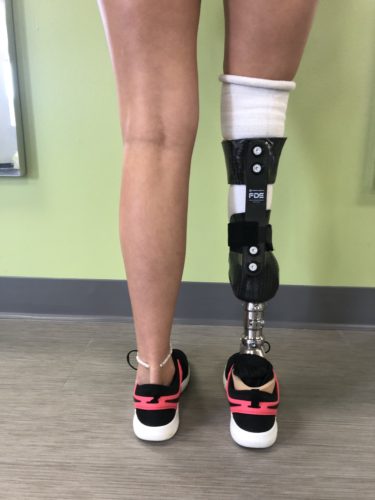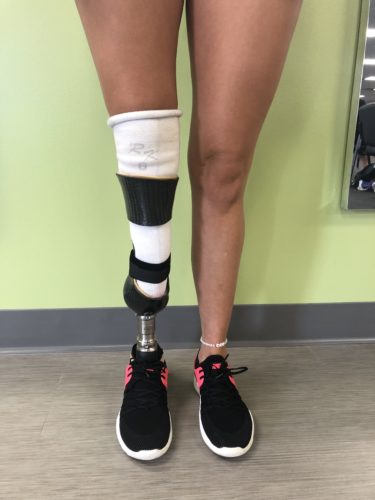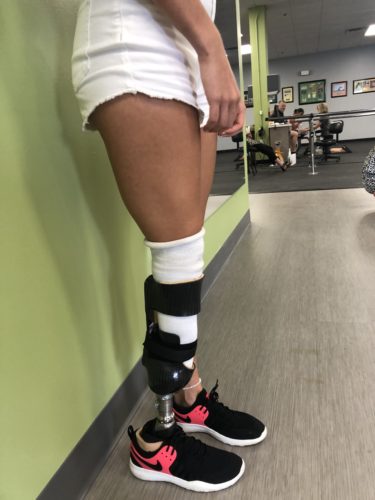Prosthetic & Orthotic
Associates of Hawaii
1314 S. King Street
Suite 1564
Honolulu, HI 96814
Phone: (808) 597-1773
Fax: (808) 597-1772
Email:
[email protected]

All patients being fit with a transtibial prosthesis are measured and casted for a prosthetic liner made of medical grade silicone. These liners are fabricated on-site in our liner manufacturing lab.
The second component of the transtibial prosthetic system is the prosthetic sock. These socks are layered on top of the liner and act as a wick between the liner and the socket. Socks also accommodate for volume changes within the residual limb.
The residual limb is then placed in the socket and air is evacuated. The socket will either contain a vacuum chamber which has been laminated into the socket, or a one-way expulsion valve, depending on the specific needs of the patient (some longer residual limbs do not require elevated vacuum). Lastly, a sealing sleeve is rolled up to seal against the liner above the socket trim lines.
Another variation of the transtibial socket is the Supra Flex system, which allows lower trim lines and increased flexibility at the knee without sacrificing stability.

This socket design, named for POA founder Stan Patterson, CP, features a two-piece flexible socket system with an attached carbon fiber strut. This innovative new design allows the patient to bear weight on the end of their residual limb and utilize their muscles in a way not possible when wearing a traditional prosthetic socket, resulting in a much more natural stride. The carbon fiber strut helps to propel the prosthesis, and the patient is able to control it by firing their muscles, giving them a better awareness of the position and movement of their limb.



Prosthetic & Orthotic
Associates of Hawaii
1314 S. King Street
Suite 1564
Honolulu, HI 96814
Phone: (808) 597-1773
Fax: (808) 597-1772
Email:
[email protected]